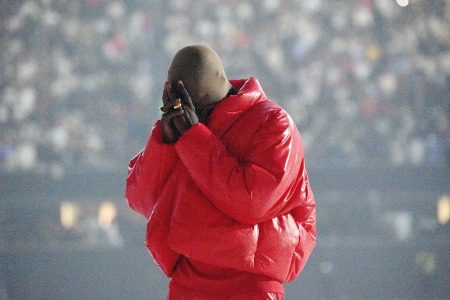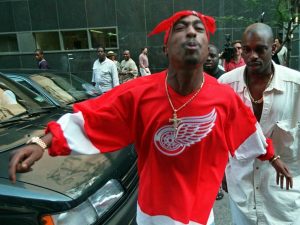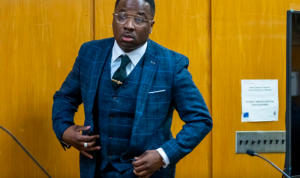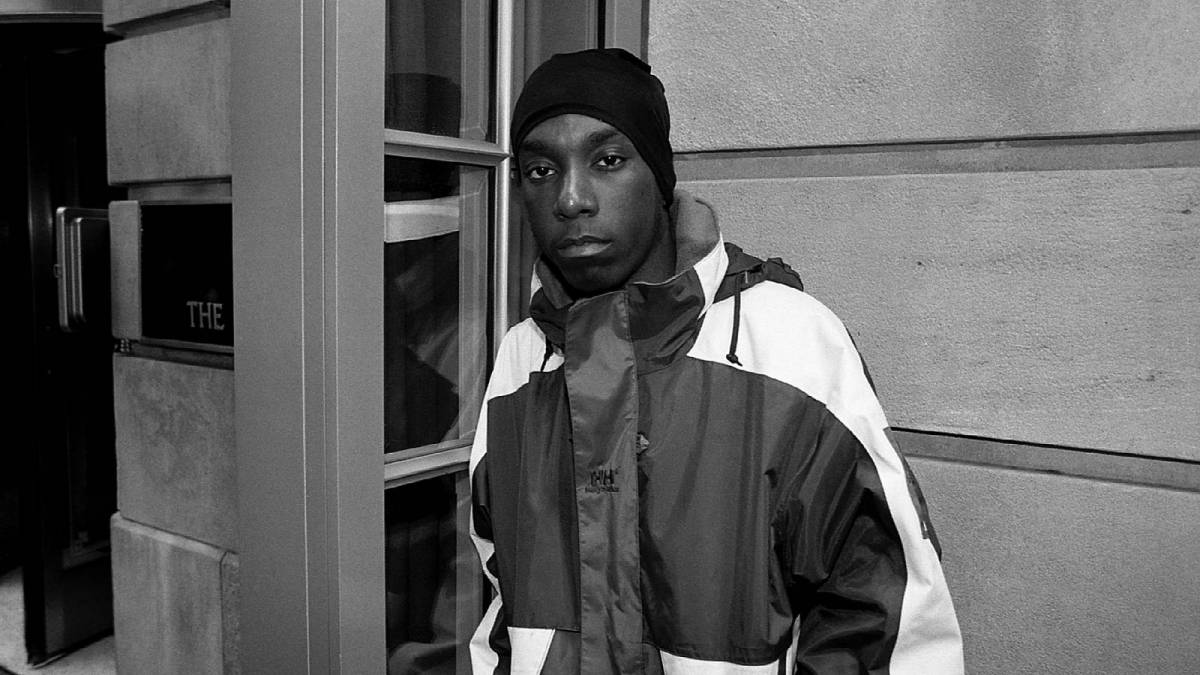Daft Punk shocked the world when they announced their retirement after 28 years on February 22. The duo broke the news with an eight-minute video excerpt titled “Epilogue,” from their 2006 film Electroma. Since then reactions from artists on social media have begun to outline the unparalleled impact the French icons made on dance music.
In an unpublished Billboard interview in August 2007, one day after the pair performed for 12,000 fans at MCU Park in Brooklyn, Daft Punk’s Thomas Bangalter and Guy-Manuel de Homem-Christo sat down for an exceptionally rare interview discussing the events that would ultimately go on to change the course of dance music entirely. In these previously unpublished excerpts, Bangalter and de Homem-Christo discuss the burgeoning US electronic music landscape, how their historic Coachella performance came together, the creative synergies with Kanye West, and their future plans to release a live album. Elements of this interview appeared in 2007; the following is an edited version of the full conversation.
Why do you think there’s been such a powerful reaction to this tour?
Guy-Manuel de Homem-Christo: “I think it is a combination of factors. First, it’s rare: [Normally] when you do a record, you go on tour. The ‘Discovery’ album was quite a successful record but we didn’t tour after that. Also, I think especially in the U.S., it took some time for people to get to know the music. House music or electronic music in general was not [widely popular] in the U.S. 10 years ago, but now it is spread all over, on the radio and supermarkets. It always takes much more time for acts from outside the U.S. to be known here, even if at the time they had a lot of fans.”
It’s pretty unprecedented for an electronic group to play in front of 12,000 people like you did last night at Coney Island.
Thomas Bangalter: “Yeah, but we’ve been playing many sold-out shows all over America and Europe. Maybe it’s the fact that we started playing shows last year, like Coachella and in France. People got really excited about the shows, so there are more and more people coming. Overall, I think this tour will have been between half-a-million and 650,000 people watching the shows. That is definitely a lot of people, but I don’t think it is purely on the basis of us not having toured for 10 years.”
Did you decide to tour based on the offers you were getting, or did you think that creatively it was time to do some shows?
Bangalter: “It was a combination of both. The interesting thing was that Coachella was a big offer financially, and that triggered the ability to bring the show to the next level. We were ready to play again — we’ve never done anything for the money or tried to take economic advantage. But we have crazy ideas, and these ideas can be expensive. The ideas we had for this tour require 20 people on the road; it’s not like these big rock stars with hundreds of people. But it’s still very challenging — a lot of technology and computers and sets. Knowing that now we could do things we couldn’t do when we played in a 1,000-person venue triggered crazier ideas and the ability to make it happen.”
Like what, specifically?
Bangalter: “We have 15 tons of equipment, including prototypes or modified regular technology — things we’ve re-engineered. We built the custom pyramid. We set up a production company, Daft Arts, in Los Angeles, to work on [the duo’s 2006 film] ‘Electroma.’ We really used it, in the same way we’d produce a music video, to come up with a total independent take on it. There’s a lot of troubleshooting and tech and making custom computers. We work with Ableton Live, which is really at the core of the performance right now: We have the music and the lights synced up. It really makes the robots and the personas come to life, within this universe we’ve worked on for the last 12 years.”
So with all that technology, what are you actually doing up there during the concert?
Bangalter: We’re controlling the music and some of the cues with the lights. It gets technical. We have synthesizers and remote controls in the pyramid. All of the equipment is on big, large towers on the side, with Ethernet remote controls. It’s new stuff. But it’s fun, because we’ve tried to really approach it from scratch and redesign an entire rig that will allow us to do what we want to do. We want to be able to loop stuff, mash up, filter EQ and transpose. It’s a little bit chaotic. But the thing we focused on is what you get out of the show: an intense experience of music, lights and robots, with a thin line between fiction and reality. That is really the concept of this tour, which was not the concept of the stuff we were doing 10 years ago. We wanted to create an intense experience.
“But if you suddenly decide, in the middle of the set, that you want to do a 15-minute version of “One More Time,” can you do that?
Bangalter: The program allows you to do it, but the show as it is right now does not. It works on a combination of music and visuals. So what we’ve worked more on is the ability to change things within certain timeframes, but we still need to move to a certain point, or to the next song. Ten years ago, we were not interested in such a visual implementation of it: It’s a total representation of what we’re trying to express, and not just an audio one. We really see it as a kind of abstract storytelling — an audio/visual revealing, from a very minimal, monochrome start to a multi-color finish.”
“We’ve really tried to reinterpret every song so that they connect to each other, amid this concept of mash-up. We have a very precise image of the evolution of the three albums that we did [1997’s ‘Homework,’# 2001’s ‘Discovery’ and ‘Human After All’], despite the moderate response we had for the last one. A lot of the tracks from [‘Human After All’], which has not been received well by critics and maybe not by the audience, have gotten a stronger response when we play them in the show. It was really important for us to try and express that — this kind of triangle that exists between the three records. I think the tour has been successful in that way.”
Kanye West’s new song “Stronger” is No. 6 on the Billboard Hot 100 this week. What are your thoughts on his sample of “Harder, Better, Faster, Stronger?”
Bangalter: “We did ‘Harder, Better’ seven years ago and then he sampled it. We had used a sample from an Edwin Birdsong’s ‘Cola Bottle Baby,’ and he then sampled the a cappella we used. It’s a funny thing. It’s quite symptomatic of this circle of sampling and being sampled and passing it along to the next producer, all the more coming from white kids in America and France and passing it along to urban culture. We did the same thing in a different way with Busta Rhymes, who used a ‘Technologic’ sample. We’ve always been very open-minded and excited about unexpected connections.”
Did you meet Kanye?
de Homem-Christo: “Yes. The song is really great and we really like it. When we met him, he was a fan as much as we are fans of his work. It was like if we had collaborated him in the studio. He was happy to see that we liked it so much. It’s not a collaboration in the studio, but the vibe of the music we do separately connected in what he did with the song. It’s really great. On the way to San Francisco, at the airport, we heard it on Power 106 in L.A. The DJ had made an edit of our song at the beginning and then it turned into his song.”
What are your thoughts on the way branding has become so prevalent in dance-music culture?
Bangalter: “We are part of the older generation in a way, where people were still selling millions of records. We’ve been fortunate enough to introduce our name at a time when it was maybe an easier process than now. And we’re fortunate enough to still be able to make a living and go on tour and work on experimental projects. We really tried so far to stay out of exclusive deals: ‘Robot Rock’ was on last week’s ‘Entourage’ and ‘Technologic’ was in an iPod commercial. That’s just part of the culture. We don’t reject it. It can be the soundtrack for everyday life. We’re happy to be part of it. But so far, we’re not officially sponsored by a brand on an exclusive basis.”
How long do you think it will be before Daft Punk releases an album or tours again?
Bangalter: ‘That, we cannot answer. We don’t decide the release date before making the music. I think the cool thing is that we’re always trying to do something that hasn’t been done, or ultimately, that we aren’t doing ourselves yet. That’s what we felt about the film and this tour. It is challenging to get back in the studio and work with ideas we haven’t expressed before. Some ideas take time, but some just take a few weeks. So we’ll see.”







